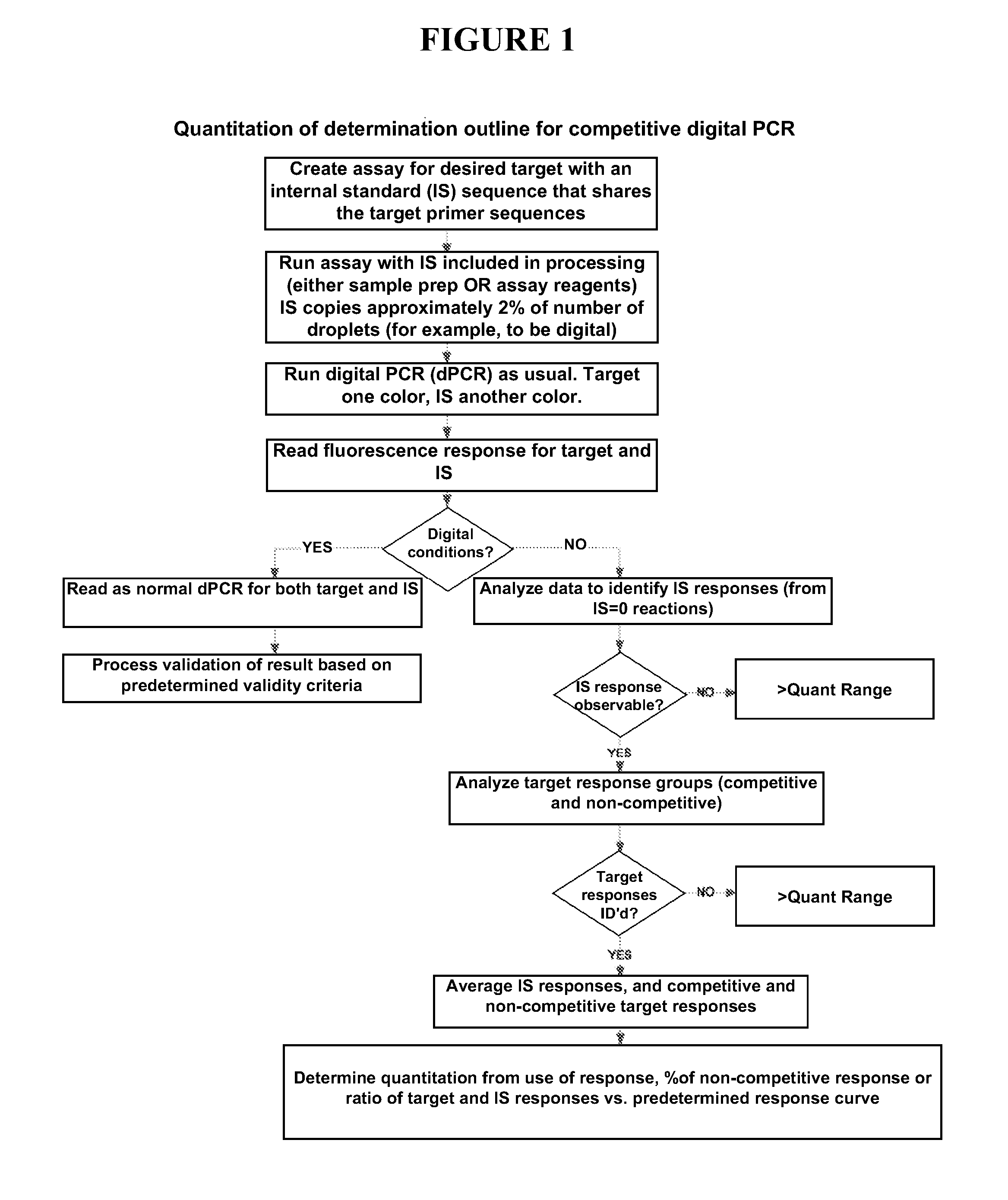Quantitating high titer samples by digital PCR
a high-titer sample and digital pcr technology, applied in the field of nucleic acid analysis using digital pcr, can solve the problems of uncertainty and inaccuracy, differences in amplification efficiency between target and reference sequence, and problems with quantitation by digital pcr
- Summary
- Abstract
- Description
- Claims
- Application Information
AI Technical Summary
Problems solved by technology
Method used
Image
Examples
example 1
dPCR Competitive
[0062]In some embodiments, the present invention provides methods quantitation of one or more target nucleic acid sequences using cdPCR (SEE FIG. 1). Some embodiments of the present invention utilizing cdPCR are conducted using one or more of the following reagents, procedures, and analysis.
[0063]Sample nucleic acid is obtained from any suitable source, and is extracted and / or processed according to known methods to obtain nucleic acid suitable for amplification by PCR. A PCR reaction mixture is created using any customary or suitable concentrations of standard amplification reagent including: primer oligonucleotides specific for target nucleic acid and internal standard nucleic acid, fluorescent probes (i.e. differentially labeled probes specific for the target sequence and probe), DNA polymerase enzyme, amplification buffer, deoxynucleotides, internal standard (IS) nucleic acid, etc. The IS nucleic acid is added to the reaction mixture such that the concentration w...
example 2
dPCR LATE
[0070]Digital PCR using LATE-PCR assay design enhancements, takes advantage of the fact that fluorescence intensity detected after a fixed number of cycles of LATE-PCR, e.g. 40 cycles, correlates with initial template concentration (SEE FIG. 2). The final fluorescence level after amplification by LATE-PCR has a strong relationship to the log of the starting concentration. Furthermore, final fluorescence levels display reduced scatter at the LATE-PCR linear end-point compared to exponential end-point values obtained by traditional real-time methods, enabling more precise target quantitation. Thus, combining LATE-PCR, which generates generally linear amplification responses in the later stages of cycling, provides a means to extend the dynamic range of dPCR. In order to retain the desired target specificity and avoid potential off-target mis-priming artifacts, it is preferred that the concentration-adjusted melting temperature of the Limiting Primer at the start of the amplif...
PUM
| Property | Measurement | Unit |
|---|---|---|
| volume | aaaaa | aaaaa |
| volume | aaaaa | aaaaa |
| diameter | aaaaa | aaaaa |
Abstract
Description
Claims
Application Information
 Login to View More
Login to View More - R&D
- Intellectual Property
- Life Sciences
- Materials
- Tech Scout
- Unparalleled Data Quality
- Higher Quality Content
- 60% Fewer Hallucinations
Browse by: Latest US Patents, China's latest patents, Technical Efficacy Thesaurus, Application Domain, Technology Topic, Popular Technical Reports.
© 2025 PatSnap. All rights reserved.Legal|Privacy policy|Modern Slavery Act Transparency Statement|Sitemap|About US| Contact US: help@patsnap.com



